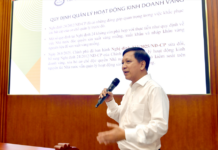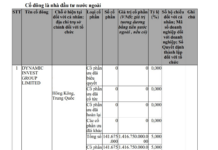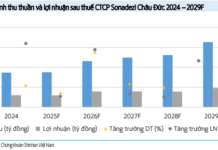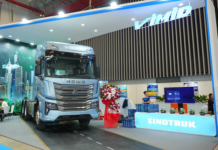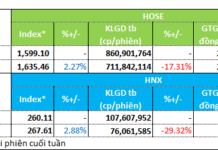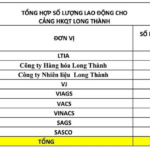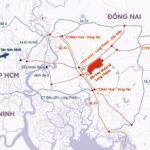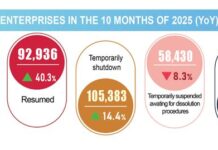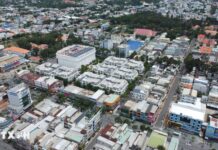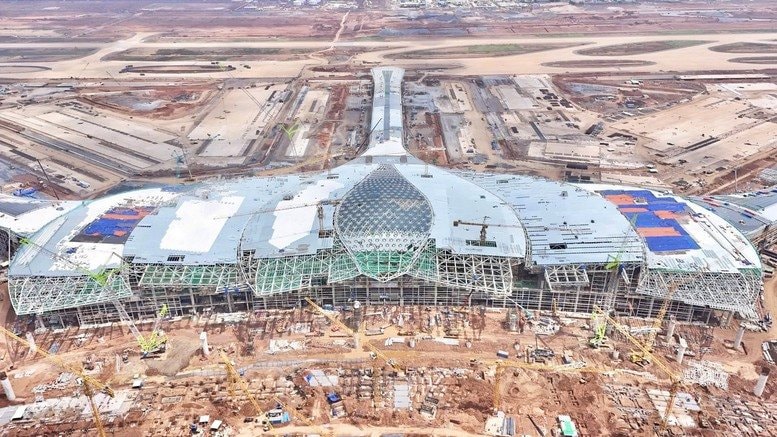
The Long Thanh International Airport will welcome its first technical flight on December 19th. Photo: ACV
Recently, the Vietnam Airports Corporation (ACV), the contractor for the Long Thanh International Airport project, announced a large-scale recruitment event at Vietnam’s largest airport. The event offers over 3,000 job vacancies, providing attractive employment opportunities for locals in Dong Nai and neighboring areas.
The program is scheduled to take place on August 23rd at the Service Center in An Phuoc, Dong Nai.
According to ACV, during this recruitment day, units will introduce their hiring needs and requirements for key positions in phase 1 of the Long Thanh International Airport project. Attendees can learn detailed information about the positions, submit applications, and participate in preliminary interviews with the businesses.
Notably, the units and related enterprises have a diverse range of positions available that do not require prior experience and offer comprehensive training. These positions include technical, cargo, baggage, check-in, cleaning, and catering services, among others.
The participating units in this recruitment drive include Vietjet Aviation Joint Stock Company, Vietnam Airport Ground Services Company (VIAGS), Saigon Ground Services Company Limited (SAGS), Vietnam Airlines Aviation Joint Stock Company (VACS), Vietnam In-flight Supply Joint Stock Company (VINACS), Tan Son Nhat Airport Services Joint Stock Company (SASCO), and Vietnam Aviation Academy (VAA).
ACV, in particular, is seeking to fill approximately 140 positions. Many of these positions are not directly related to aviation, such as legal, administrative, accounting, medical, driving, and supervisory roles. Furthermore, many of the positions do not require a high level of education, as a high school diploma is sufficient to apply. Local workers are also given preferential consideration.
ACV’s leadership representative stated that the company prioritizes employing locals from Dong Nai, especially those who have given up their land to support the construction of the airport.
Long Thanh Airport Phase 1: Racing Towards the Finish Line
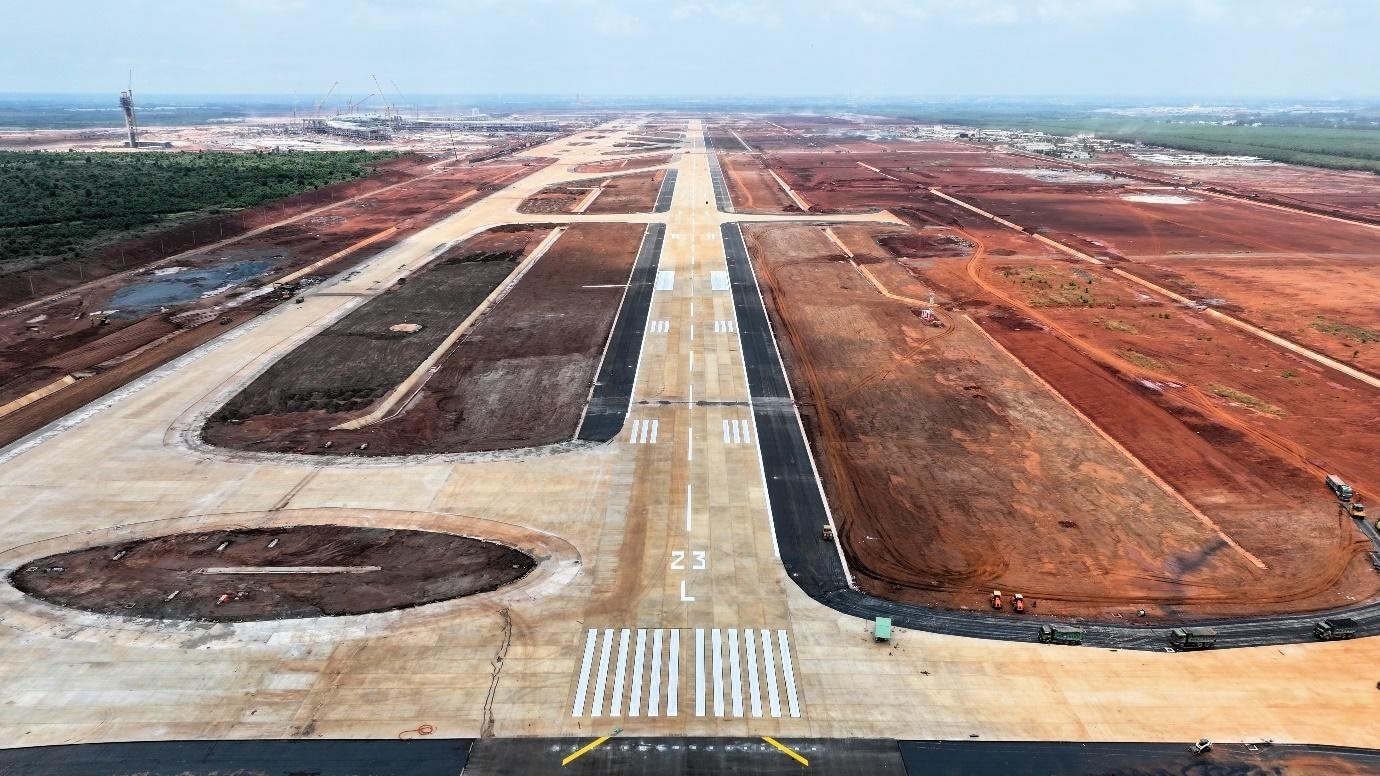
Upon completion, Long Thanh Airport will be capable of accommodating various types of large aircraft. Photo: ACV
After the Prime Minister inspected the progress of the Long Thanh International Airport Phase 1 project, the Government Office, on August 12th, announced the Prime Minister’s conclusion, directing the units to adjust the schedule and strive to complete all packages and items to meet the standards and conditions for the inauguration on December 19th.
Previously, on July 31st, at the online conference to review the work of the State Steering Committee for important national projects and key transport projects in the first 6 months of 2025, Mr. Nguyen Tien Viet, Deputy General Director of ACV, said that on December 19th, coinciding with the inauguration of many large-scale infrastructure projects across the country, Long Thanh Airport will welcome its first flight from Hanoi to the Long Thanh International Airport. The aircraft will taxi into the completed terminal through the passenger boarding bridge system, marking the completion of the first phase of the project.
The Long Thanh International Airport is a key national project of Vietnam, with a total investment of over $16 billion. The airport is expected to welcome its first technical flight on December 19th and commence commercial operations in early 2026. In its initial phase, the airport will have a maximum capacity of 25 million passengers and 1.2 million tons of cargo per year.
Upon the completion of the entire project by 2050, the Long Thanh International Airport is expected to serve up to 100 million passengers and 5 million tons of cargo annually. According to a recent report by OAG, a travel and aviation monitoring and statistics organization, the Long Thanh International Airport is likely to join the club of 100-million-passenger airports in the next decade.
In reality, by 2024, there were only five airports worldwide that reached the 100-million-passenger mark. These include Atlanta (USA), Dubai (UAE), Tokyo Haneda (Japan), London Heathrow (UK), and Dallas/Fort Worth (USA)
The Ultimate Guide to Mastering the Art of Persuasion: Unlocking the Secrets to Captivating Your Audience and Driving Results
The upcoming Social Housing Project in the new urban area of Ward 1, Ca Mau City, is set to break ground on August 19. Developed by T&T Group, the project comprises a series of buildings, rising up to a maximum of 10 stories, housing approximately 1,241 residential units. This pioneering endeavor marks the first social housing venture undertaken by Bầu Hiển, showcasing a commitment to addressing the needs of the community.
The Sky’s the Limit: Why Long Thành Airport Needs a Helping Hand to Reach New Heights
“Experts emphasize the importance of synchronized regional connectivity infrastructure for the smooth operation and economic efficiency of the Long Thanh International Airport. They caution that if the airport is completed while the construction, upgrade, and expansion projects of connecting roads remain unfinished, there is a significant risk of traffic congestion and waste of investment.”
The Road Networks Linking Ho Chi Minh City, Neighboring Provinces, and Long Thanh International Airport
The construction of vital transport links to Long Thanh International Airport is being expedited to ensure timely completion. These critical infrastructure projects are designed to provide seamless connectivity to the airport, facilitating efficient travel for passengers and supporting the smooth operation of this major aviation hub.
Transferring International Flights from Tan Son Nhat to Long Thanh: A Forewarning Lesson from the Philippines and Canada
According to experts, relocating all international flights to Long Thanh Airport could potentially increase travel and operational costs, leading to a host of unforeseen issues. It is imperative to thoroughly consider and calculate the implications, as there are real-world examples of airports that have failed due to their remote locations and inefficient operations.










